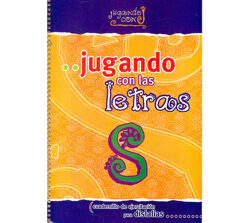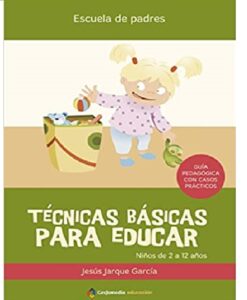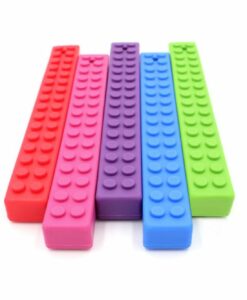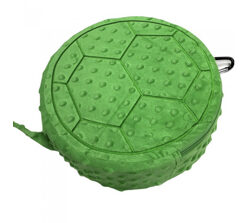
Aprender es modificar o adquirir nuevas habilidades, destrezas, conocimientos, conductas y valores mediante la experimentación, el estudio, la observación, el razonamiento o la instrucción. Múltiples y variados juegos disponibles hoy en día, desde los más clásicos hasta los más innovadores, pueden ser grandes herramientas para construir una variedad de aprendizajes: lectoescritura, matemáticas, razonamiento y resolución de problemas, etc. aportando motivación e interés a los jugadores. Más allá de la estimulación de las inteligencias múltiples, fomentaremos la autoestima, incentivaremos la cooperación y el trabajo en equipo y mejoraremos el comportamiento y la actitud, entre otros muchos aspectos.
 Auditory Memory Caterpillar
29,90 € (VAT not included)
Auditory Memory Caterpillar
29,90 € (VAT not included)
 Playing with letters - S. Dyslalia Exercise Booklet
Sold out (VAT not included)
Playing with letters - S. Dyslalia Exercise Booklet
Sold out (VAT not included)
 Técnicas básicas para educar
15,90 € (VAT not included)
Técnicas básicas para educar
15,90 € (VAT not included)
 Giant textures teether
18,10 € (VAT not included)
Giant textures teether
18,10 € (VAT not included)
 Vibrating turtle cushion
Sold out (VAT not included)
Vibrating turtle cushion
Sold out (VAT not included)
 Mini cow vibrating cushion
Sold out (VAT not included)
Mini cow vibrating cushion
Sold out (VAT not included)
 Fidget - infinite
Sold out (VAT not included)
Fidget - infinite
Sold out (VAT not included)
Showing 1–36 of 142 resultsSorted by latest
No account yet?
Create an AccountCute puzzle with flexible animal pieces to assemble and discover which animal it is. It encourages children to play cooperatively and motivates them to learn more about the animals that inhabit our planet.
Pedagogical values: • Physical development - motor skills • Communication and language - reasoning • Understanding the world - observation Contents: 18 flexible pieces of 10x10 cm to form 6 animals. 1 "More Ideas to Play" booklet. Recommended age: 2 to 5 years old https://logopedicum.com/wp-content/uploads/2022/07/flexi-forms-animals-247x300.jpg 11.98 instock De 3 a 6 añosJuguetes terapéuticosLANGUAGESemantics 0 0.00 0 https://logopedicum.com/wp-content/uploads/2022/07/flexi-forms-animals-247x300.jpg 232307240872232817232814245250 11.98 9.90 0.00 0.00 2022-07-15T17:47:36+02:00In the reeducation of vocal behavior, different methods or techniques are known that help to balance pressures - sub and supra glottal - to favor the vibration of the CCVV without added tensions and/or pressures. The work with this resource can be adequate in cases of vocal alterations, without lesion or with associated lesion, either with children or adults. Ideal resource for working with voice patients, with orofacial myofunctional imbalances, with brain damage, etc.
In the 1990s, Finnish speech therapist Marketta Sihvo developed a method called LAX VOX® as a vocal exercise to care for, regenerate and train the voice. As the name suggests, the name of the technique means relaxed and free voice.
Roughly speaking, you need a tube and a container one third full of water. Put the tube in the water and place the other end on your lips. Find a comfortable posture, sitting or standing, and emit a sustained /O/ in a relaxed tone. The water begins to bubble and allows you to feel the vibration.
By moving the tube up and down in the water we can find the measurement or depth that allows us to make this emission in the easiest possible way. Most people find maximum comfort in the 2-3 marks on the tube. It allows your cheeks to vibrate freely, the tongue is relaxed in the mouth and the jaw is also relaxed. The lips close completely around the tube so that all the air enters the probe. Enjoy the pleasant vibration for 3 to 5 minutes. Remove the tube from your mouth after the indicated time. Sing your song, recite its lyrics, perform glides or short tones according to your vocal goal. Your voice should feel softer, come out effortlessly and feel balanced. Practice this 3 to 5 times a day.Acquiring the specific materials of the Lax Vox® brand allows the technique to be carried out in the most suitable way. The borosilicate glass bottle is the ecological alternative to plastic bottles. It is marked to indicate the amount of water. The cap provides a complete seal for the bottle. At 0.5 l, the Retap® bottle is the perfect size and fits perfectly in the hand. In addition, it is dishwasher, microwave and refrigerator safe. So you can also use it as a drinking bottle.
The Lax Vox tube is made of non-toxic, platinized, biocompatible medical silicone according to USP Class VI. It is free of harmful plasticizers. Easy to clean: heat resistant and dishwasher safe. Its dimensions are 35 cm long, 1 cm diameter, 2 mm wall thickness.
El objetivo fundamental de este libro es dotar de los conocimientos, estrategias y actitudes necesarios para la comprensión y explicación de los Trastornos del Espectro Autista de Alto Funcionamiento (TEA-AF) desde un enfoque positivo, que tenga en cuenta no sólo las dificultades sino también las habilidades de este colectivo.
Para alcanzar dicho objetivos, el libro se esctructura en cinco partes. En la primera se hace un breve repaso de la evolución histórica del concepto de autismo hasta llegar a la conceptualización actual de Trastornos del Espectro Autista (TEA). En la segunda se exponen las características clínicas y psicopedagógicas que mejor identifican al grupo. En la tercera se presentan las habilidades y dificultades en la interacción social. En la cuarta se abordan los perfiles lingüísticos y comunicativos. Y en la quinta se analizan, por un lado las actividades e intereses restrictivos y su inflexibilidad mental, y por otro, se hace un repaso del perfil cognitivo y de aprendizaje que puede ser de gran utilidad para que los maestros y educadores puedan realizar las Adaptaciones Curriculares Individualizadas en el ámbito escolar.
La presente obra está centrada preferentemente en los conocimientos sobre este colectivo y tiene su continuidad en otra obra en la que se abordarán las estrategias de intervención. Ambas pueden servir como un instrumento para la adquisición de las competencias específicas de los futuros profesionales de la educación superior (maestros, psicopedagogos, psicólogos) en el nuevo marco de la Enseñanza Europea de Educación Superior (EEES) y para facilitar a las familias la comprensión y explicación del comportamiento de sus hijos y la manera de ayudarles.
https://logopedicum.com/wp-content/uploads/2015/11/autismo-y-sindrome-asperger-c--pia-247x300.jpg 10.30 instock BooksOthers 0 0.00 0 https://logopedicum.com/wp-content/uploads/2015/11/autismo-y-sindrome-asperger-c--pia-247x300.jpg 25059923230724350548147244068 10.30 9.90 0.00 0.00 2015-11-12T16:04:44+01:00An original and ingenious wooden manipulative game. The child masters the alphabet and its correspondences between the three letter scripts, associating their spellings two by two.
The movable letters snap into the board and fit easily into each other with the right angle. The board supports multiple individual or small group games: sorting the letters by spelling,sorting them in alphabetical order, associating the spellings with each other, finding the missing letter, sorting the vowels (in red) and consonants (in blue), etc.
The set consists of:
Set of 12 clocks composed of a white plastic support, and on it, two transparent plastics with printed hands. The person has to recognize the analogical time and write on the bottom of the card the time in digital format with an erasable marker.
The set includes:Clear and attractive photographic material ideal for working on both oral and written language. The box contains 60 cards illustrated with photos reflecting daily life situations in which people and animals appear as protagonists. Such material induces the patient or student to understand the photo, to deduce what the protagonist in question might be thinking, to empathize and infer what you would think if you were in the same situation, etc. This resource is especially interesting to develop the capacity for abstraction, theory of mind, logical reasoning,... and allows both individual and group work.
The pack contains a metal box for storage and transport of the cards. It also includes an explanatory card with multiple activities to do in different languages.
https://logopedicum.com/wp-content/uploads/2015/09/que-estan-pensando-247x300.jpg 22.39 instock Areas of DevelopmentASDCOGNITIVE AND EMOTIONAL DEVELOPMENTCommunication and pragmaticsHearing and languageLANGUAGELEARNINGSReading and writingReading and writingSocial skillsSocial skillsSPECIAL EDUCATIONAL NEEDS 0 0.00 0 https://logopedicum.com/wp-content/uploads/2015/09/que-estan-pensando-247x300.jpg 250607243932232307245250250604 22.39 18.50 0.00 0.00 2015-09-09T13:57:51+02:00